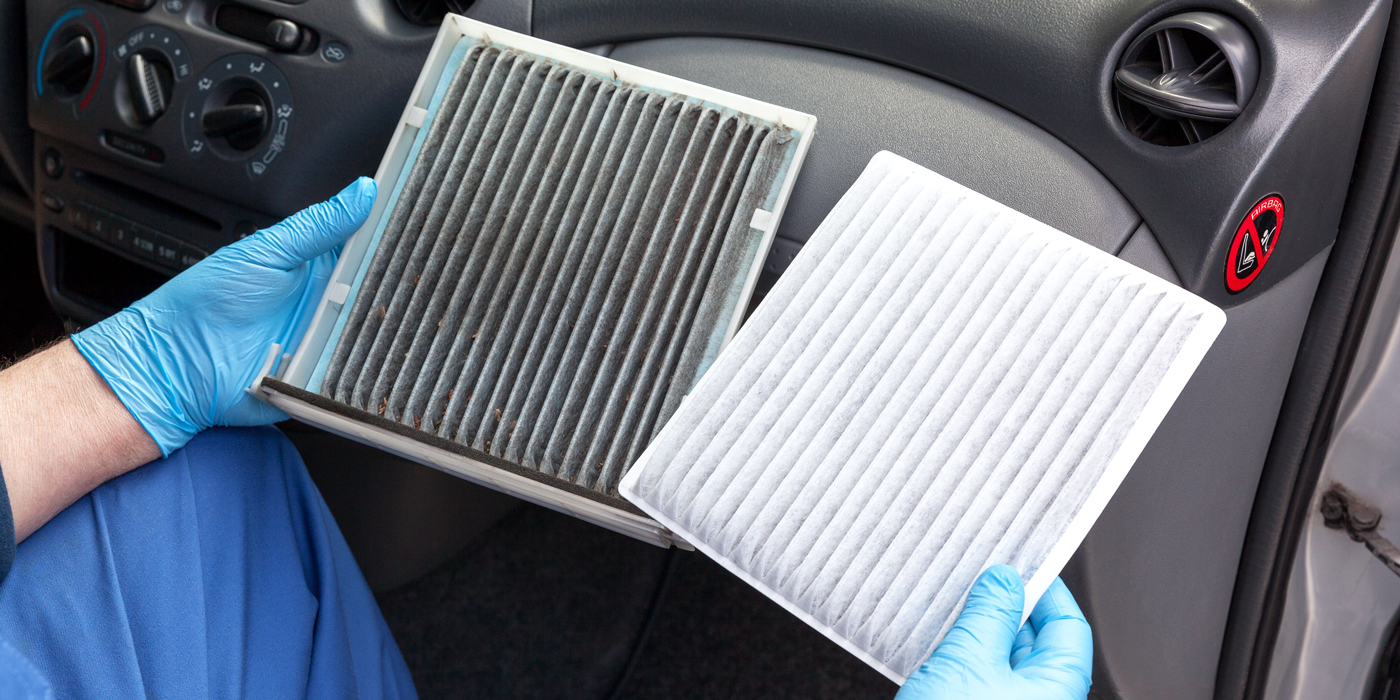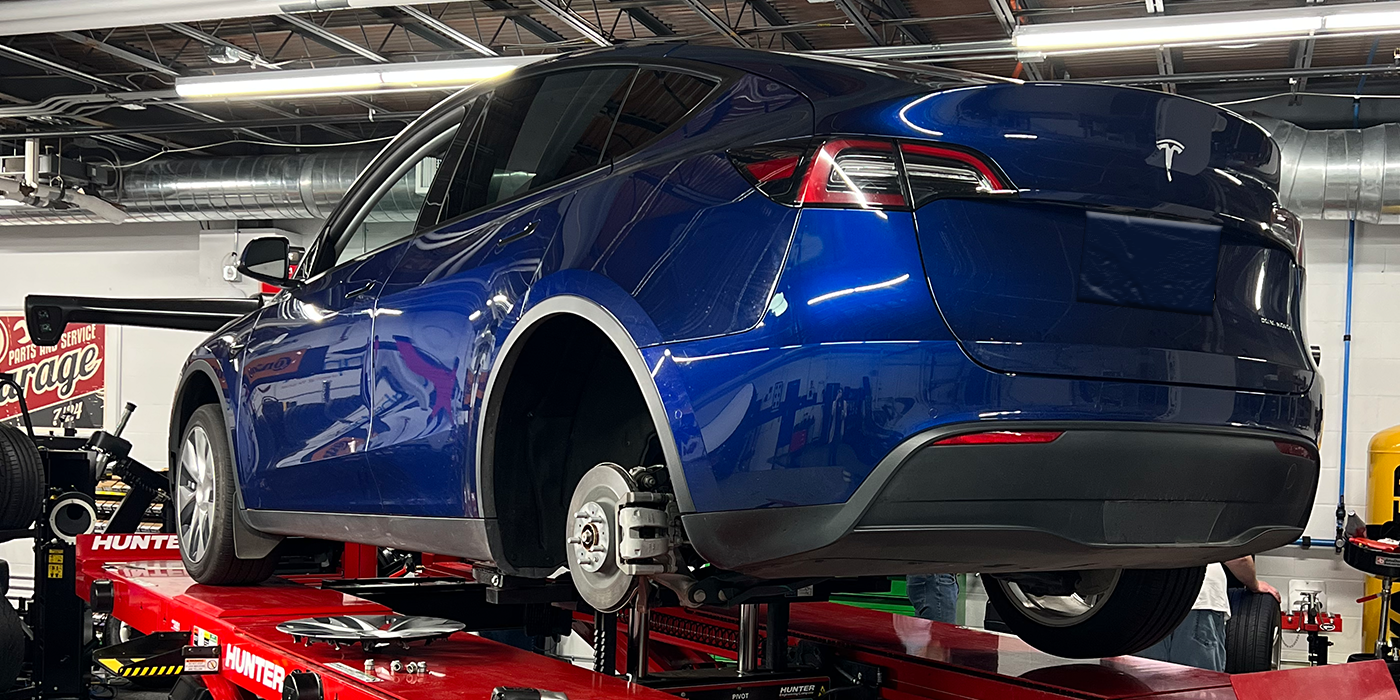"Boss, I’m feeling kind of light headed."
Diesel and gasoline exhaust can be hazardous to employees working in dealerships and automotive service businesses. And not just those working in the shop are at risk; office employees can also be exposed through poor ventilation systems.
So what can you do to protect your business and employees from dangerous exhaust fumes? It’s critical to understand the health risks, continually measure diesel and gasoline exhaust levels in the workplace, and plan and communicate how to handle hazardous materials, including diesel and gasoline exhaust, to employees. But first, let’s start with the basics.
What is Diesel and Gasoline Exhaust?
Diesel and gasoline exhaust is emitted as a result of the combustion of diesel or gasoline fuel and is made up of two types of materials: gases and particulates (soot). Some of the gases found in diesel and gasoline exhaust, such as nitrogen, water vapor and carbon dioxide, are relatively harmless. However, other gases found in diesel and gasoline exhaust, such as carbon monoxide, nitrogen oxides, phenol, formaldehyde and PAHs (polynuclear aromatic hydrocarbons), can be very harmful to humans.
The other material exhaust is composed of is very small particles and clumps of particles (soot). The chemicals found in the gas attach to the surface of the particles. As you breathe in particles – and you can breathe a lot of them deep into the lungs – these potentially harmful chemicals are inhaled as well.
Health Effects
Available data from the Environmental Protection Agency (EPA) shows short-term and long-term exposure to diesel and gasoline exhaust can cause significant health issues.
Short-term exposure to diesel and gasoline exhaust can cause irritation to the eye, nose, throat, respiratory systems and neurological systems, which may be temporarily debilitating.
Evidence also shows exposure can aggravate existing respiratory allergies. Typical symptoms include headache, lightheadedness, nausea, vomiting and numbness or tingling of the extremities, and in persons with pre-existing heart disease and atherosclerosis, chest pain and leg pain.
Repeated, long-term exposure to diesel and gasoline exhaust can pose a hazard for chronic inflammation in the lung and can increase the risk for lung cancer.
Measuring and Monitoring
Diesel and gasoline exhaust is not something that can be measured directly. There are currently no federal Permissible Exposure Limits (PELs) for diesel or gasoline exhaust provided by National Institute for Occupational Safety and Health (NIOSH) nor the Occupational Health and Safety Administration (OSHA).
According to the National Council for Occupational Safety and Health, industrial hygienists typically choose among several compounds found in diesel or gasoline exhaust to measure and use that compound as a surrogate for the whole. Some components typically chosen include total particulates, elemental carbon, PAHs and carbon monoxide.
If either total particulates or elemental carbon is chosen to measure, an air-sampling pump with a filter can be used. To measure PAHs, an air-sampling pump with charcoal tubes is needed.
For carbon monoxide, either a carbon monoxide meter or a hand-held detector tube pump with carbon monoxide tubes can be used. The PEL provided by OSHA for carbon monoxide is 55 micrograms per cubic meter of air.
OSHA Safety Standards
Despite the lack of specific standards for measuring diesel and gasoline exhaust, employers should be aware they still have a federal obligation to protect employees from hazardous exhaust in the workplace. According to Section 5(a)(1) of the OSHA Act, often referred to as the “General Duty Clause,” employers are required to “furnish to each of his employees employment and a place of employment which is free from recognized hazards that are causing or are likely to cause death or serious physical harm to his employees.”
Section 5(a)(2) requires employers to “comply with occupational safety and health standards promulgated under this Act.”
Hazard Communication Standard
According to the OSHA Hazard Communication Standard, all employers are required to provide the following controls for all employees exposed to hazardous chemicals in their work areas under normal operating conditions or in foreseeable emergencies:
• Implement a written hazard communication program for the workplace, including a list of hazardous chemicals present.
• Provide employee training programs regarding hazards of chemicals and protective measures; the hazards of diesel and gasoline exhaust should be incorporated in the training program.
• Label containers of chemicals in the workplace, as well as of containers of chemicals being shipped to other workplaces.
• Prepare and distribute material safety data sheets (MSDS) to employees and downstream employers.
Safety Recommendations and Controls
• The use of engineering and/or workplace practice controls is the preferred method for controlling carbon monoxide exposures. Propane fork trucks should be maintained and tuned on a regular basis. Substituting electric fork trucks for propane-fueled trucks can eliminate the presence of carbon monoxide.
• As part of the Hazard Communication Standard, educate employees on the effect of exposure to diesel and gasoline exhaust, including carbon monoxide.
• Provide adequate ventilation and exhaust systems that support the entire workshop to minimize build-up:
connect tailpipes to flexible hoses that vent directly outdoors when working on engines while overhead doors are closed; make sure on-site adapters fit every tailpipe and exhaust stack configuration so the exhaust system is able to be used on all vehicles; open doors when possible to allow for cross ventilation; and install wall fans (note: wall fans do not ensure elimination of carbon monoxide).
• Avoid running engines except when absolutely necessary, especially when overhead doors are closed.
• Install carbon monoxide alarms in the service garage; these are similar to household detectors.
• Perform routine maintenance checks on fans, exhaust and ventilation systems to ensure they are operating properly: check hoses for any holes or exhaust burns; verify adapters are able to stay on the tailpipe and exhaust stack during testing procedures; check fans periodically for excessive noise or vibration; feel the air suction at the adapter at all the bays to ensure the ductwork is not blocked; and close or block unused hoses to prevent loss of suction for other hoses.
Provided courtesy of Zurich. For more information on how you can protect your business, call Zurich at 800-840-8842 x 7449, or visit www.zurichna.com/zdu.













